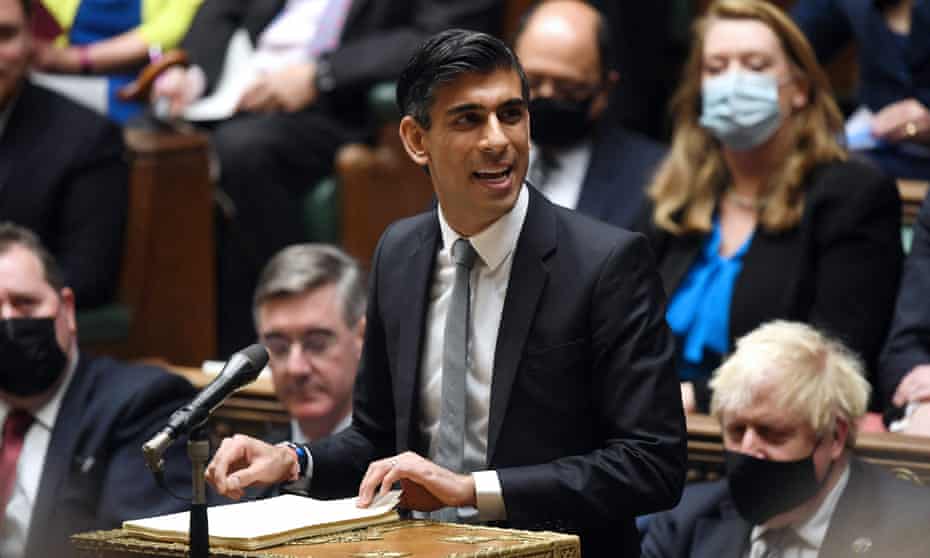What happened in the Autumn Budget?

In recent UK Budgets, we’ve become accustomed to giveaways and reliefs to help individuals and businesses cope with the impact of a global health pandemic. This has been a particularly expensive time for the government, bringing about an estimated bill of around £350 billion for COVID measures alone.
Now that furlough schemes and stamp duty holidays have come to an end, there were expectations of a tax grab in 2021’s Autumn Budget to recoup costs. This didn’t quite materialise, in part due to forecasts of stronger growth for the UK economy this year – revised from 4% to 6.5%, it’s the fastest expected growth for 50 years.
Despite being seen as easy targets, there were no significant changes to capital gains tax, pension or inheritance tax rules. Instead, Chancellor Rishi Sunak claimed he had a “moral” mission to cut taxes and restore fiscal discipline. However, having already announced plans for £40 billion of tax increases prior to Budget Day, it wasn’t all about giveaways. So what were the main changes announced on 27 October?
Tax increases
Sunak confirmed last month’s proposed 1.25% tax rise in National Insurance contributions. From April 2022, this will apply to earned income for employees, employers and the self-employed earning more than £9,568. The £12 billion this raises will be legally ring-fenced to fund health and social care, with the surcharge due to be formalised as the ‘Health and Social Care Levy’ in 2023. From that point, it will also be applied to people working beyond State Pension age.
With the income tax threshold frozen in the March Budget until at least 2026 – pushing more people into the higher tax brackets as wages increase – this means many people can expect a higher tax bill from next April.
In September, the government also announced there would be an 1.25% increase in dividend tax. While this passed with little fanfare on the day, it’s confirmed to come into effect in April 2022 to add an extra burden for investors.
Employment
Again, one of the headline stories had already broken by Budget Day. In an effort to support lower income workers, Sunak confirmed a rise in the National Living Wage from £8.91 per hour to £9.50 for those aged 23+ from April 2022. For a 40-hour week, this translates to a salary of £19,760 a year.
He had also already announced intentions to thaw the wage freeze for the UK’s 5 million public sector workers. But it will be up to independent pay review bodies to recommend how much extra will go to the likes of nurses and teachers, and whether it will outstrip inflation.
Another measure here was easing the universal credit taper for workers on low incomes. Instead of the taxman taking 63p per pound from income over the threshold, it decreases by 8% to 55p by December, with an extra £500 added to the allowance.
Pensions
Other than a 20% top-up on contributions for low-earning savers paying into their pension via ‘net pay arrangements’, there was nothing explicit in the way of pension changes.
While it wasn’t mentioned in the Budget itself, a temporary ‘double lock’ now applies to the State Pension to circumvent rising inflation. This means payments will increase by 3.1% in 2022 rather than the official inflation rate.
Cost of living
With inflation on an upwards trajectory – forecast to hit 4.4% next year – there was a raft of measures to soften the blow of the increased cost of living for individuals and businesses. This includes:
- A freeze for fuel duty – despite predictions to the contrary – in an attempt to mitigate the surge in petrol prices.
- Reduced passenger duty for domestic flights, although there will be more charges for “ultra-long-haul” flights.
- An overhaul of alcohol taxes, stopping the planned increases in duty for lower-volume alcohol and decreasing rates for sparkling wine, rosé, cider and draught beer.
Business taxes
In cancelling planned changes to how business rates in 2022 are calculated, Sunak claims to save UK business £4.6 billion over the next five years. He also introduced a year-long 50% discount in rates for businesses in retail, hospitality and leisure. A £750 million package of investment incentives includes a new 12-month relief for firms to invest in their premises.
An increase in corporation tax to 25% was already announced in March, to take effect from April 2023.
Education
Earmarking nearly £5 billion for schools and colleges, the main headline here was the return of school funding to 2010 levels, representing £1,500 per pupil. There was also £300 million for ‘Start for Life’ parenting programmes and £170 million by 2024 for childcare.
Property
While stamp duty and capital gains tax were untouched, there were some changes to encourage housebuilding and address dangerous cladding:
- £11.5 billion to boost construction of new homes through the Affordable Housing Programme, including £1.8 billion to make use of brownfield sites.
- £2 billion cladding tax on developers to help leaseholders in unsafe buildings afford renewal costs, plus a 4% levy for large property developers.
Future-proofing your finances
While there may be few immediate changes that may affect you directly in this Budget, the groundwork had already been laid for increased tax bills in the long run. Most notable measures from the Budget in March 2021 were freezing the main allowances and rate bands for the next five years. This will raise more tax revenue as people’s income, capital gains, and asset values grow over time.
Take the pension lifetime allowance – now that it has stopped tracking inflation, it’s fixed at £1.073 million until 2025/26. As pension funds increase in value, this is likely to bring many more retirees in the firing line for 25% or 55% tax penalties each year.
Meanwhile, the cost of living is forecast to reach its highest level in decades, putting a squeeze on everyday spending and the value of investment returns.
This is a good time to think ahead and check you’re making the most of all the available allowances and tax-efficient opportunities for your money. If you’d like to take a closer look at your situation or find out more about what the overall picture looks like for you, contact us for a review.


